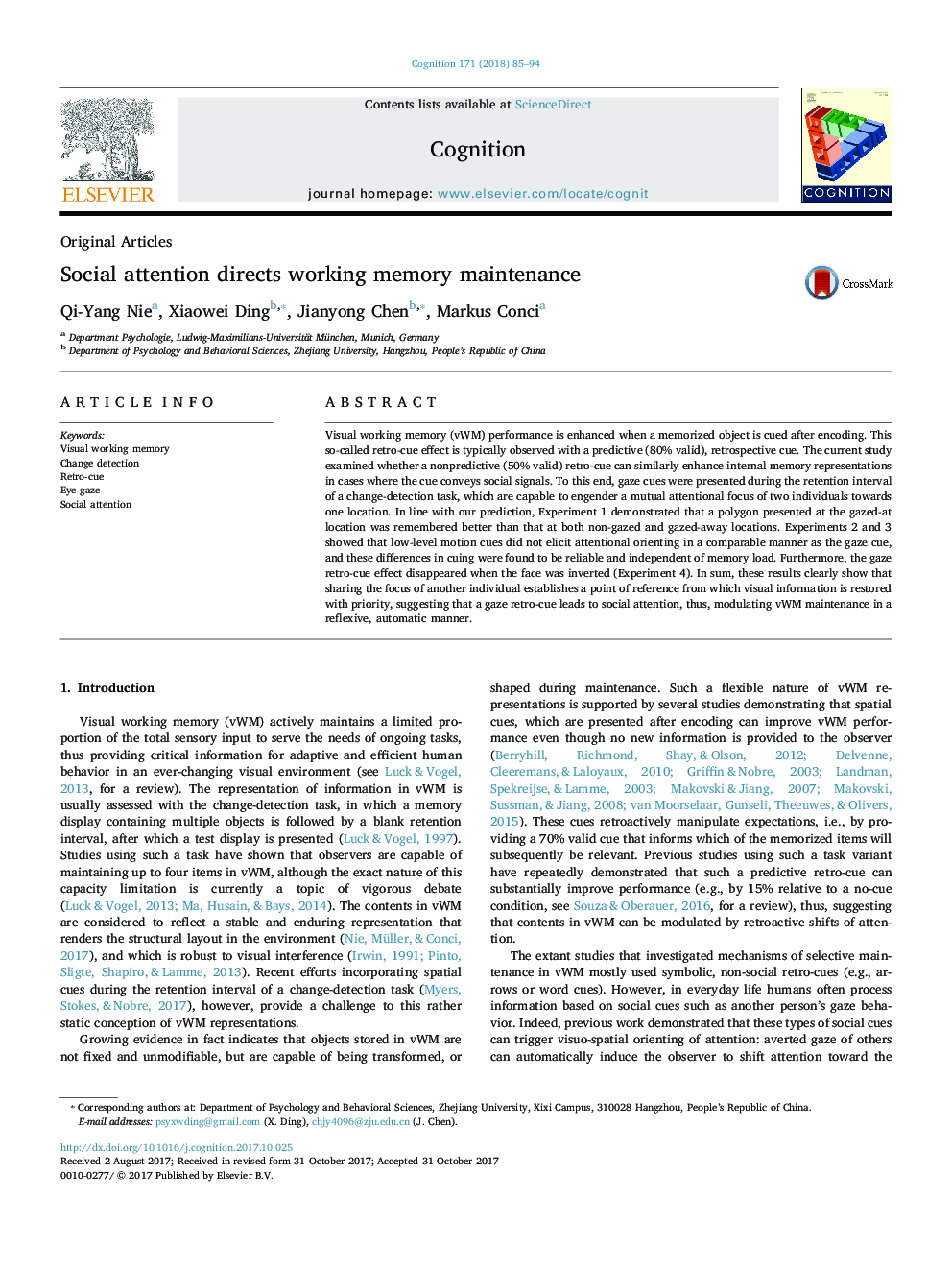| Article ID | Journal | Published Year | Pages | File Type |
|---|---|---|---|---|
| 7285589 | Cognition | 2018 | 10 Pages |
Abstract
Visual working memory (vWM) performance is enhanced when a memorized object is cued after encoding. This so-called retro-cue effect is typically observed with a predictive (80% valid), retrospective cue. The current study examined whether a nonpredictive (50% valid) retro-cue can similarly enhance internal memory representations in cases where the cue conveys social signals. To this end, gaze cues were presented during the retention interval of a change-detection task, which are capable to engender a mutual attentional focus of two individuals towards one location. In line with our prediction, Experiment 1 demonstrated that a polygon presented at the gazed-at location was remembered better than that at both non-gazed and gazed-away locations. Experiments 2 and 3 showed that low-level motion cues did not elicit attentional orienting in a comparable manner as the gaze cue, and these differences in cuing were found to be reliable and independent of memory load. Furthermore, the gaze retro-cue effect disappeared when the face was inverted (Experiment 4). In sum, these results clearly show that sharing the focus of another individual establishes a point of reference from which visual information is restored with priority, suggesting that a gaze retro-cue leads to social attention, thus, modulating vWM maintenance in a reflexive, automatic manner.
Related Topics
Life Sciences
Neuroscience
Cognitive Neuroscience
Authors
Qi-Yang Nie, Xiaowei Ding, Jianyong Chen, Markus Conci,
